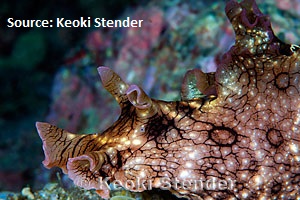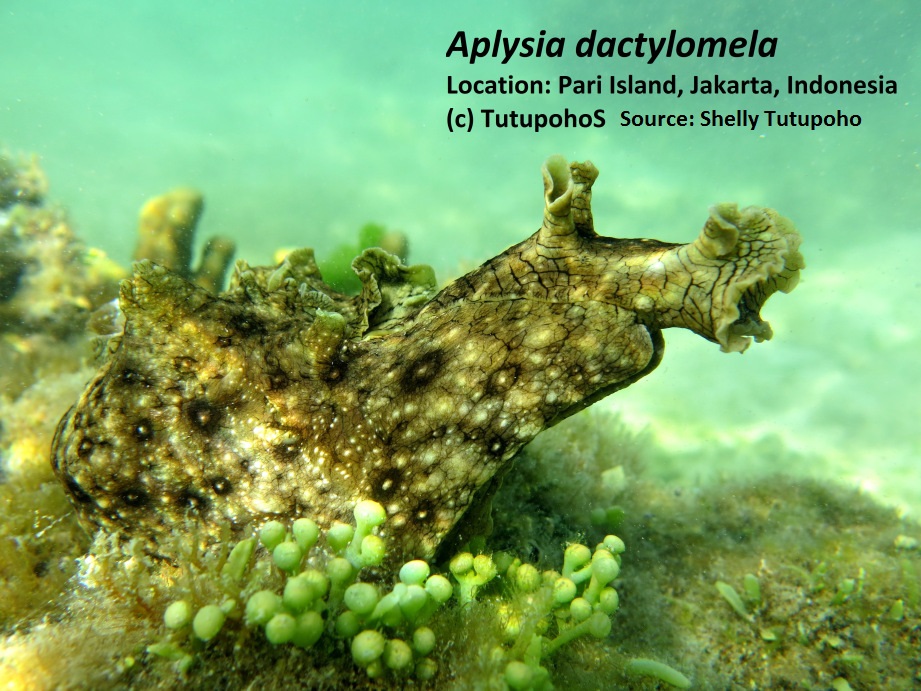
Habitat and Geography
Many
studies have stated that
Aplysia dactylomela exists in a vast array of aquatic
environments world-wide ranging from tropical to temperate
oceans, even in the Great
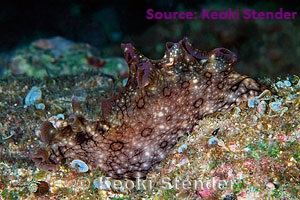 Barrier
Reef (Cummins et al. 2010) however, it has been observed that
true A. dactylomela
originates from the Atlantic Ocean and has been rapidly
colonizing the Mediterranean Sea (Valdes et al. 2013). Angel
Valdes and co-researchers studies on the origins of
A. dactylomela within
the Mediterranean have led to the discovery that the spotted sea
hare is actually composed of two distinctly different
Aplysia species,
A. dactylomela and
A. argus; the
distinction can only be made after
Barrier
Reef (Cummins et al. 2010) however, it has been observed that
true A. dactylomela
originates from the Atlantic Ocean and has been rapidly
colonizing the Mediterranean Sea (Valdes et al. 2013). Angel
Valdes and co-researchers studies on the origins of
A. dactylomela within
the Mediterranean have led to the discovery that the spotted sea
hare is actually composed of two distinctly different
Aplysia species,
A. dactylomela and
A. argus; the
distinction can only be made after
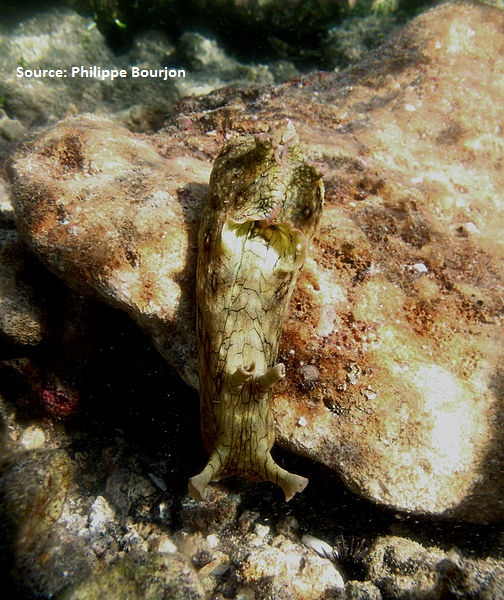 DNA sequencing (Valdes et al.
2013) Contrarily, cousin to
Aplysia dactylomela,
Aplysia argus has
origins in the Indo-Pacific oceans (Valdes et al. 2013). Prior
to Valdes’ research on the Origin and Dispersal Pathway of
A.
dactylomela in the
Mediterranean Sea, A.
dactylomela
and
A. argus were often confused as they look very similar (see
picture of A. argus to left). This
confusion between the
two species, which are only identifiable from each other through
DNA examination, may be responsible for inaccurate research
results related to the habitat and geography of
A. dactylomela during
which A. argus could
have easily been mistaken for
A. dactylomela Therefore one must be mindful while reading
articles about the spotted sea hare in the Indo-Pacific oceans,
as one should infer the species is
A. argus as o
DNA sequencing (Valdes et al.
2013) Contrarily, cousin to
Aplysia dactylomela,
Aplysia argus has
origins in the Indo-Pacific oceans (Valdes et al. 2013). Prior
to Valdes’ research on the Origin and Dispersal Pathway of
A.
dactylomela in the
Mediterranean Sea, A.
dactylomela
and
A. argus were often confused as they look very similar (see
picture of A. argus to left). This
confusion between the
two species, which are only identifiable from each other through
DNA examination, may be responsible for inaccurate research
results related to the habitat and geography of
A. dactylomela during
which A. argus could
have easily been mistaken for
A. dactylomela Therefore one must be mindful while reading
articles about the spotted sea hare in the Indo-Pacific oceans,
as one should infer the species is
A. argus as o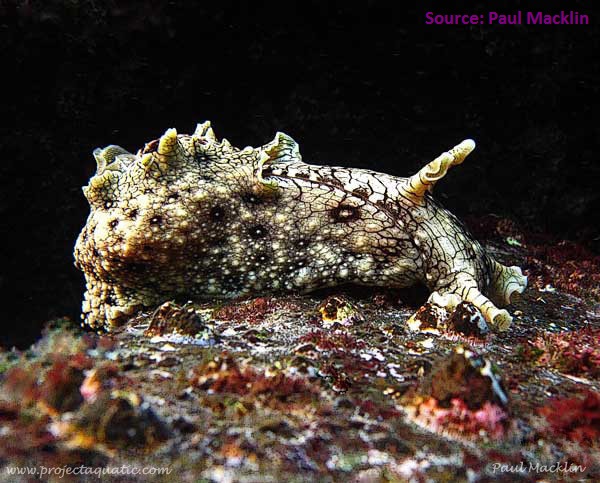 pposed to the Atlantic species of spotted sea hare,
A. dactylomela.
pposed to the Atlantic species of spotted sea hare,
A. dactylomela.
As for the typical habitat for the spotted sea hare,
Aplysia dactylomela
can be found
in high subtidal/intertidal zones (Sterrer 1986)
and shallow waters at
about one to two meters depth (Carefoot 1970). At this depth, it
is common for vacationers to come across the bizarre
looking spotted sea hare while wading in tidal pools. If wading,
keep your eyes peeled for the
portuguese man of war as it may have been directed to the
shallow waters by ocean
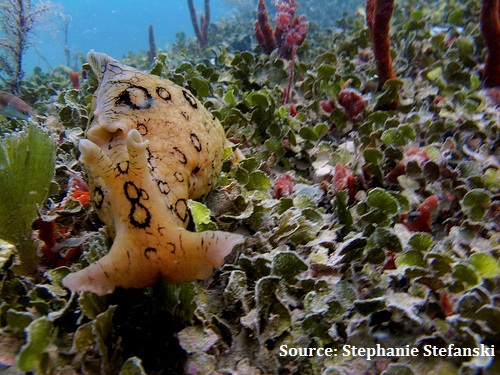 currents! As
A. dactylomela is
nocturnal, it
makes sense that it prefers the nooks and crannies
in somewhat rocky areas to escape from the sunlight during the
day (Carefoot 1989) and when feeding, can be found near sea
grasses in which it lays its eggs that look like a mass of
spaghetti! (Emore 2002).
currents! As
A. dactylomela is
nocturnal, it
makes sense that it prefers the nooks and crannies
in somewhat rocky areas to escape from the sunlight during the
day (Carefoot 1989) and when feeding, can be found near sea
grasses in which it lays its eggs that look like a mass of
spaghetti! (Emore 2002).
Up next: learn more about the sea hare's adaptations to its environment.
